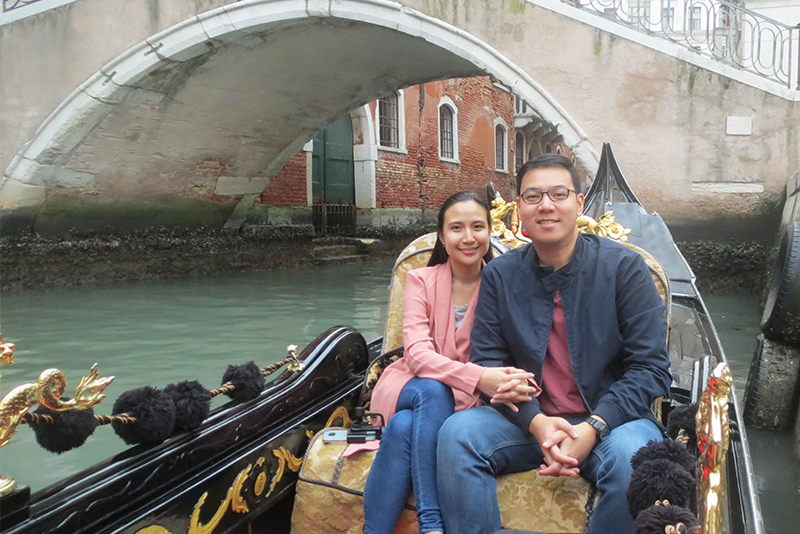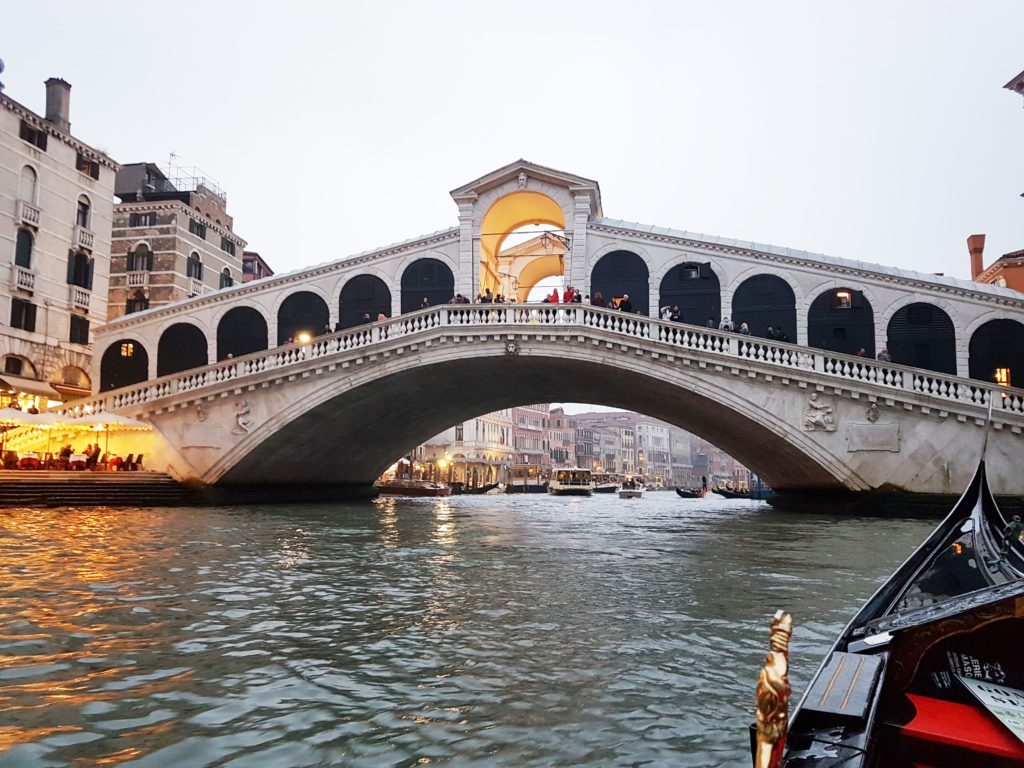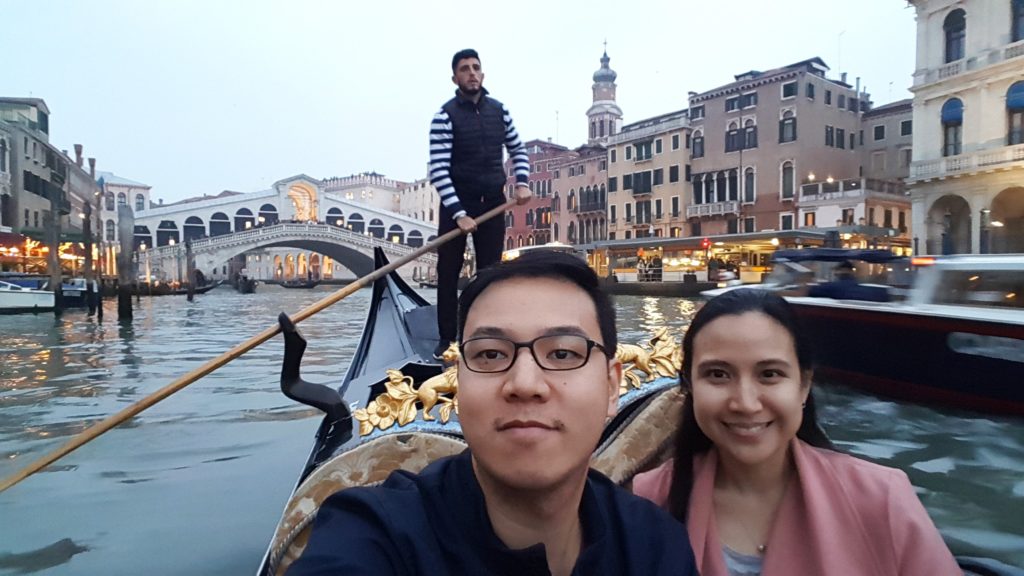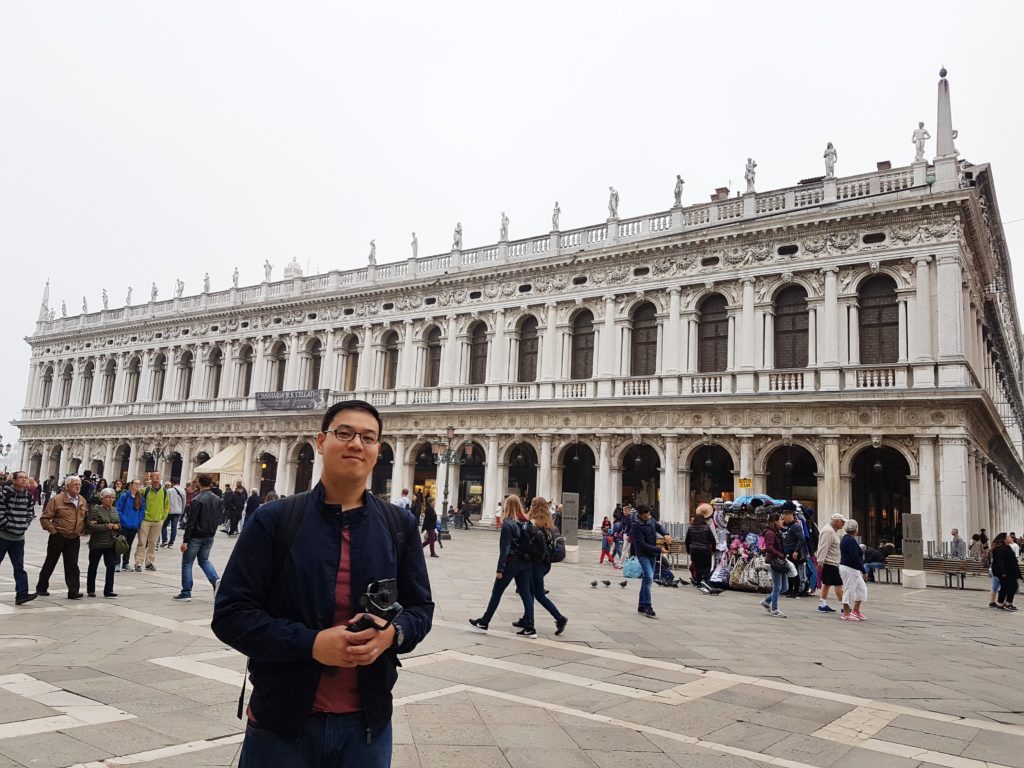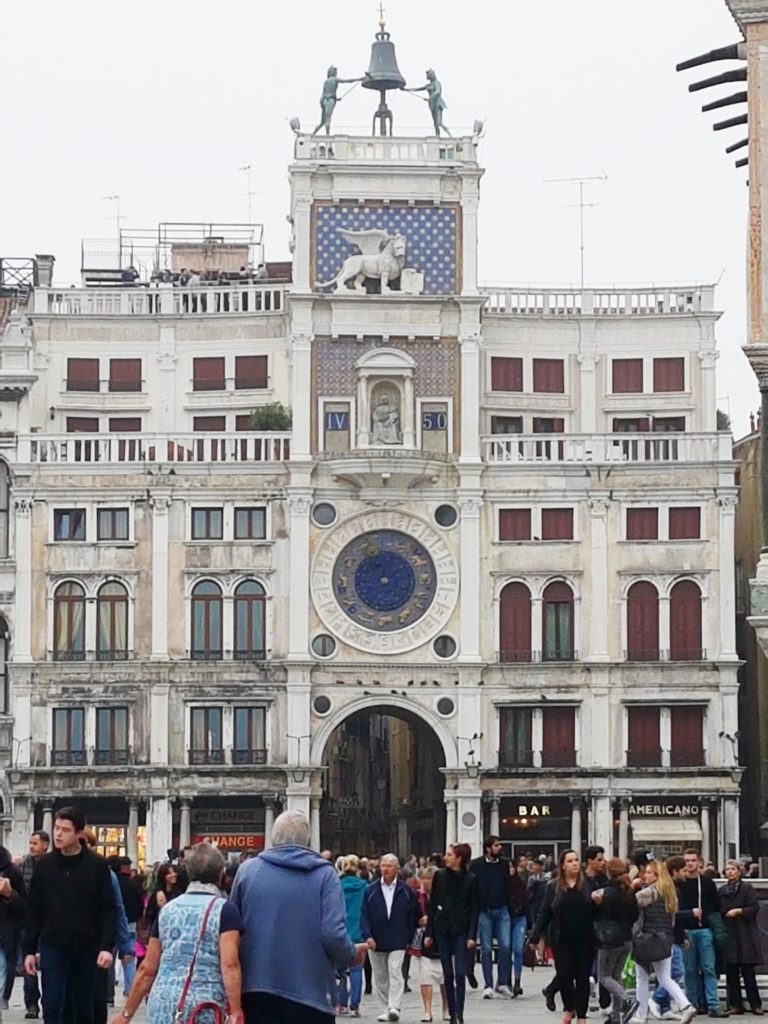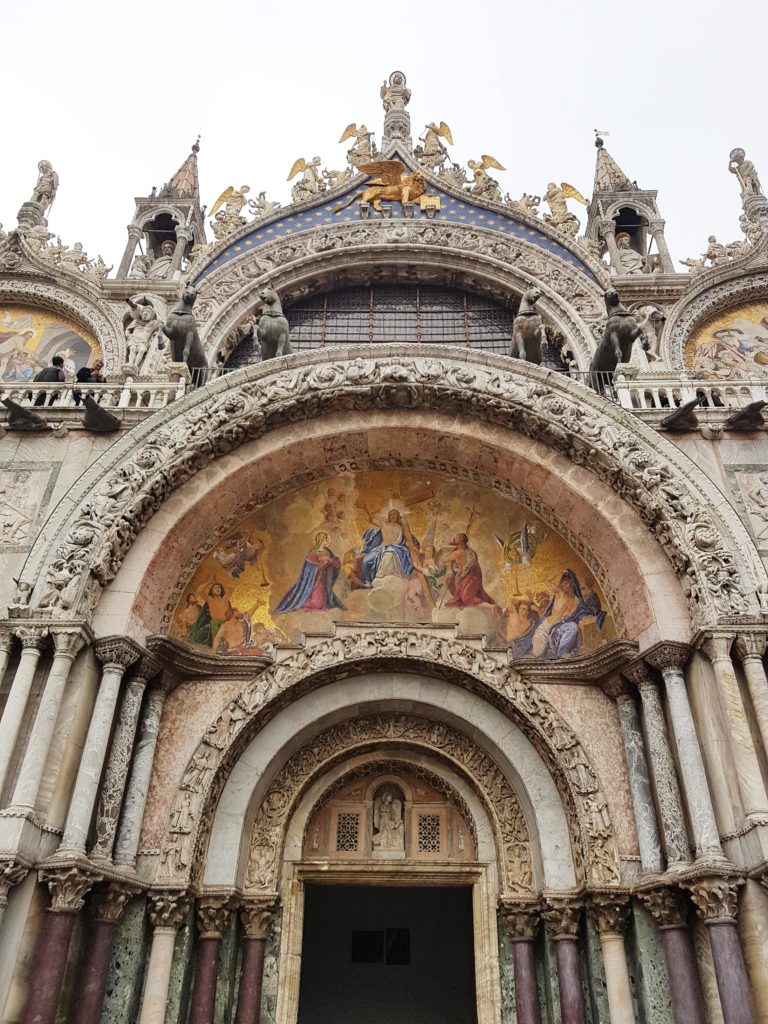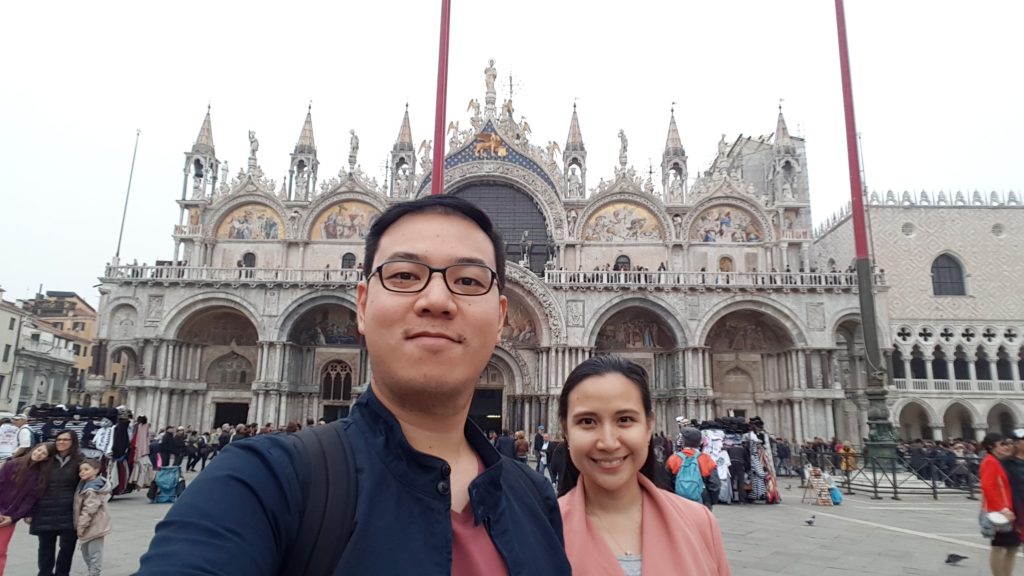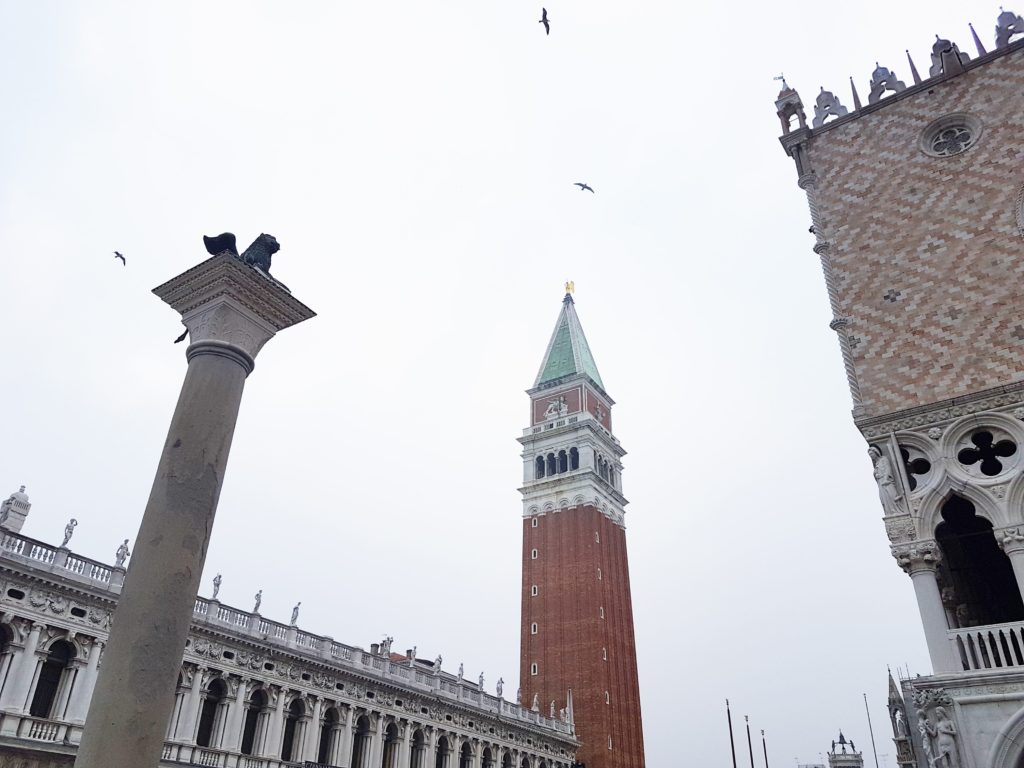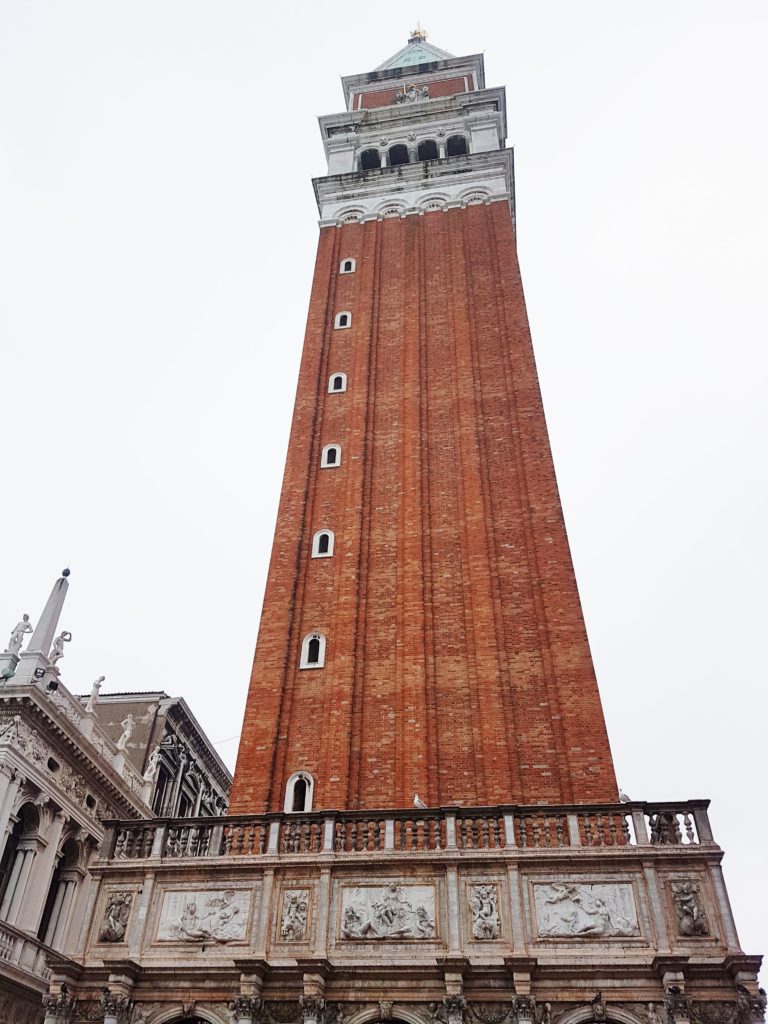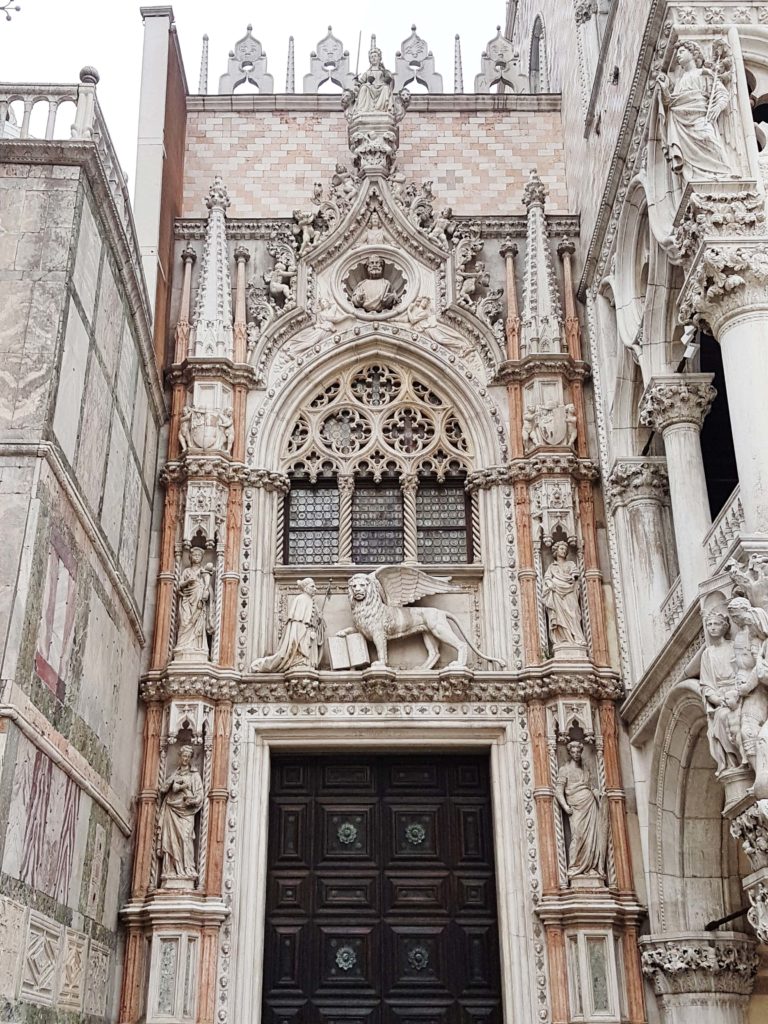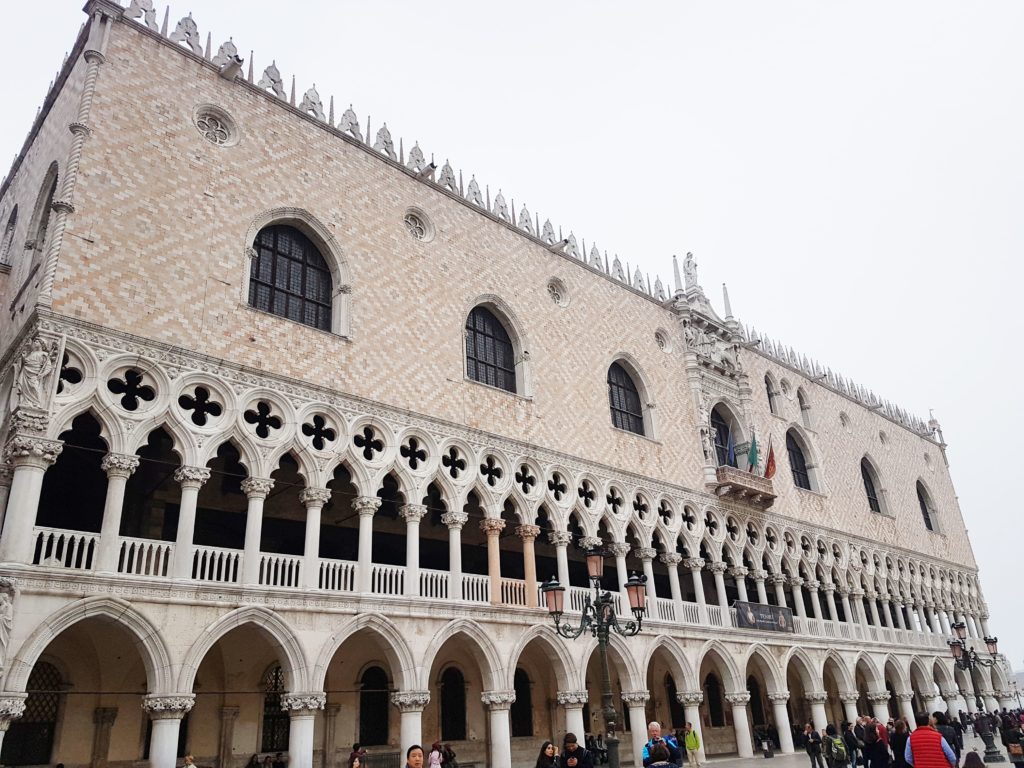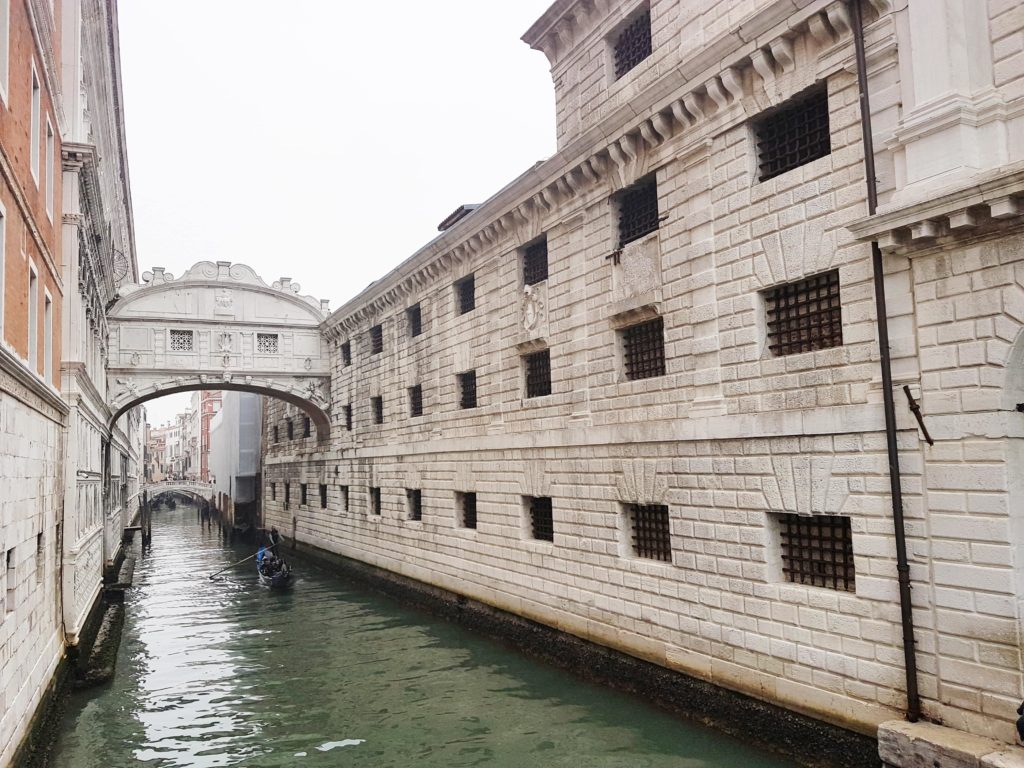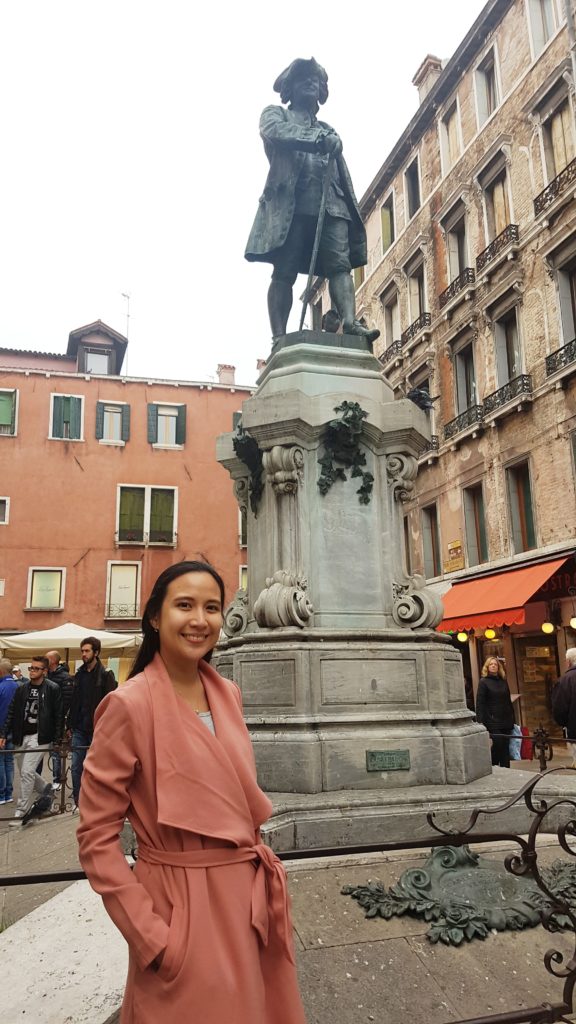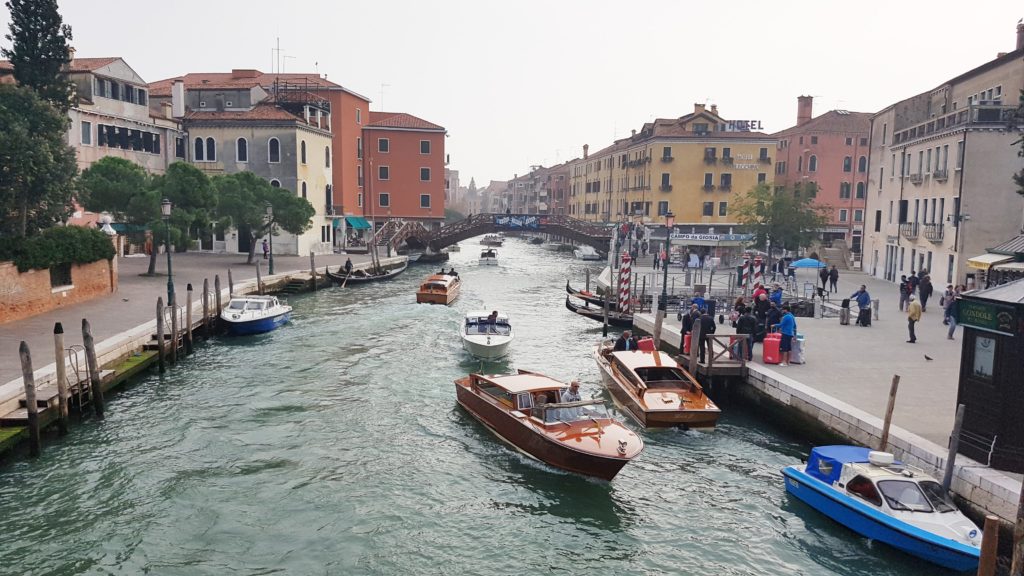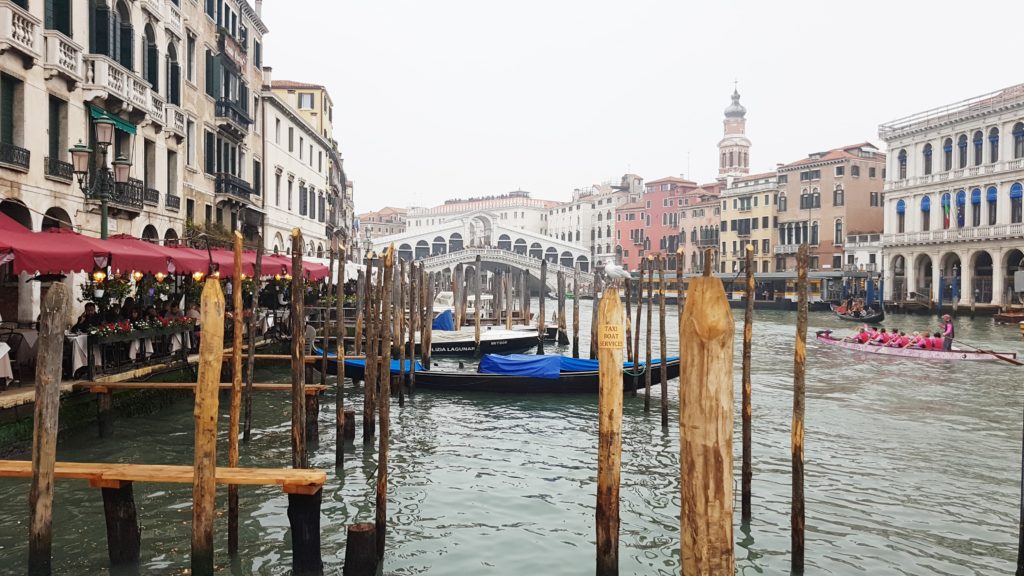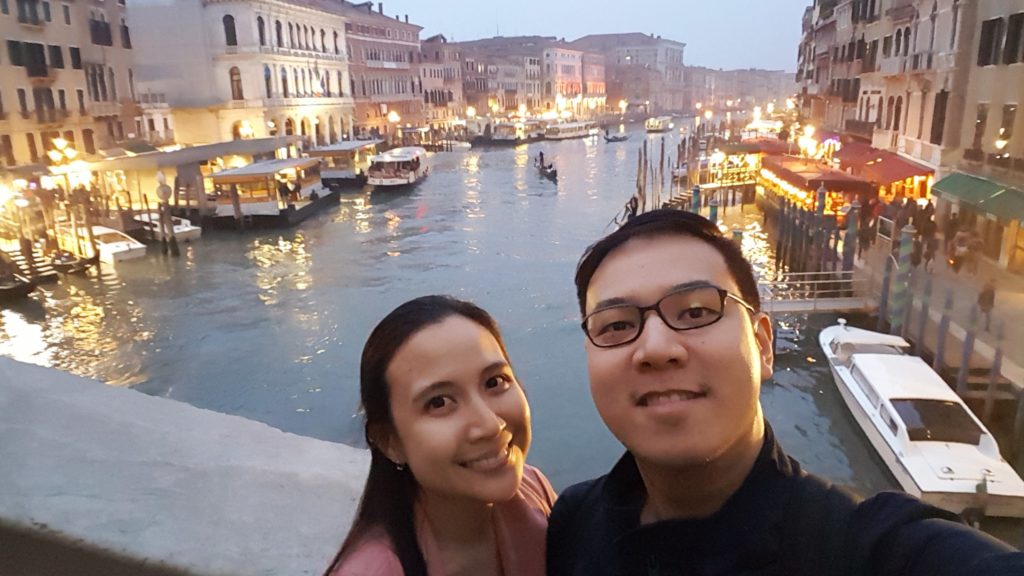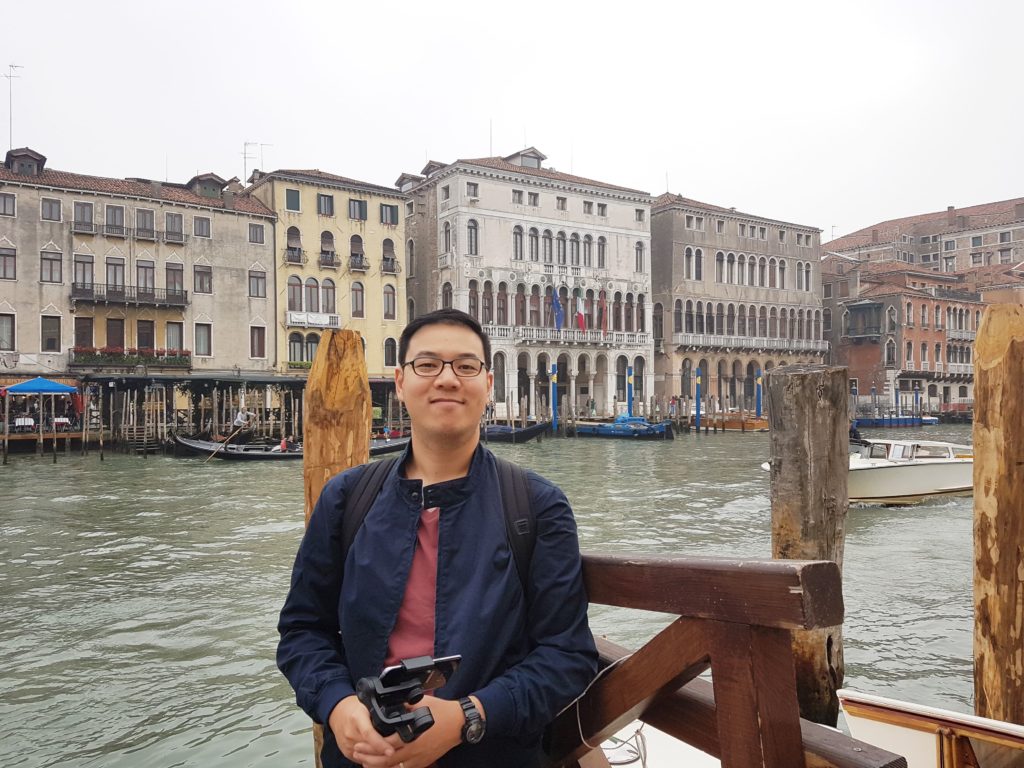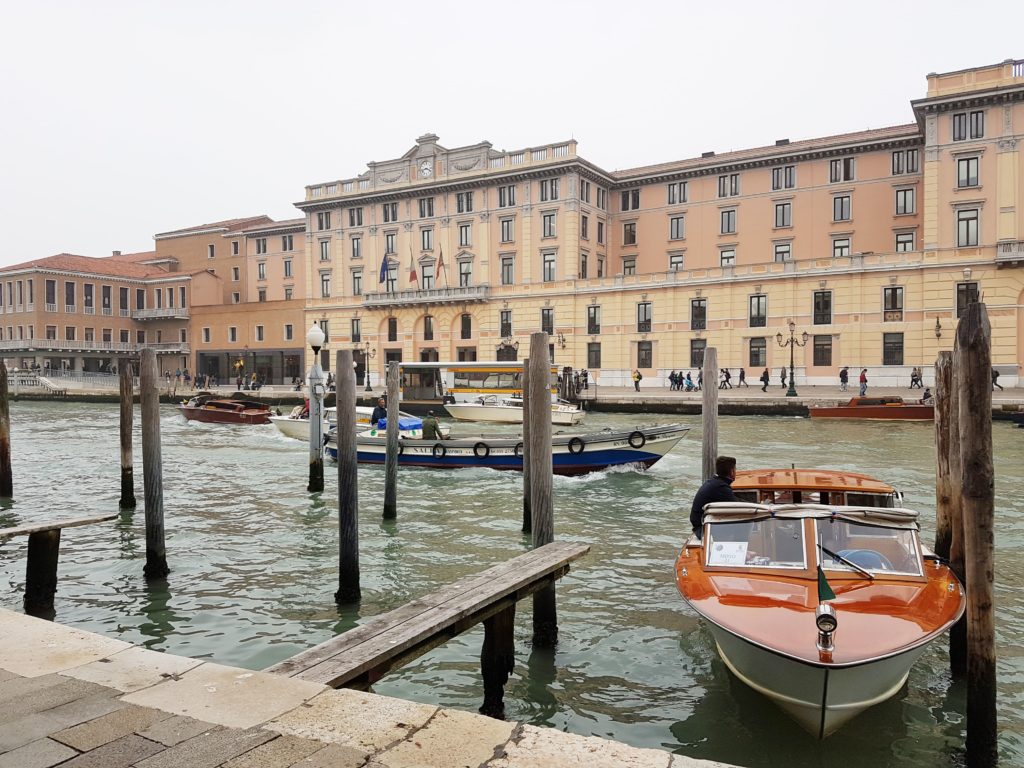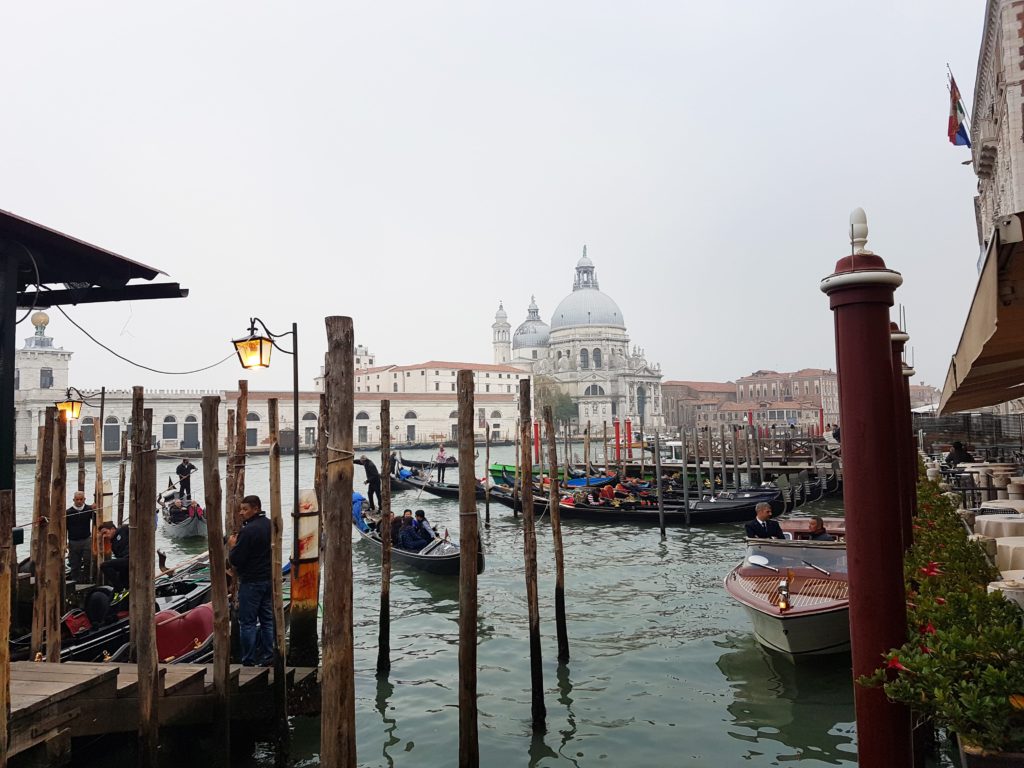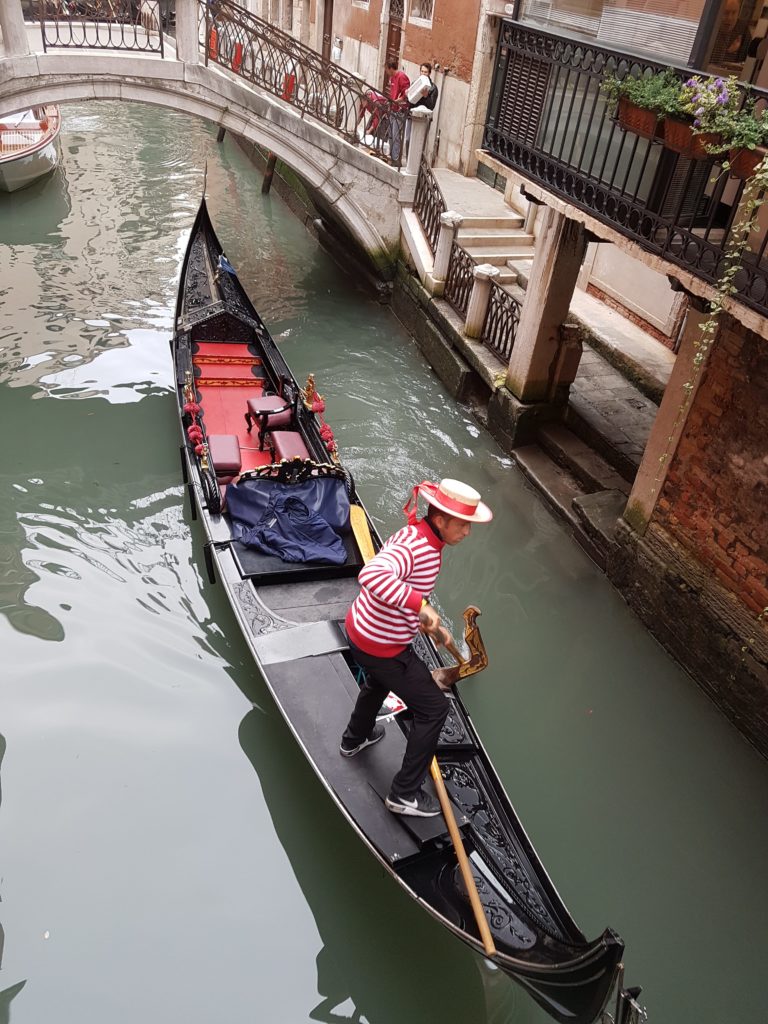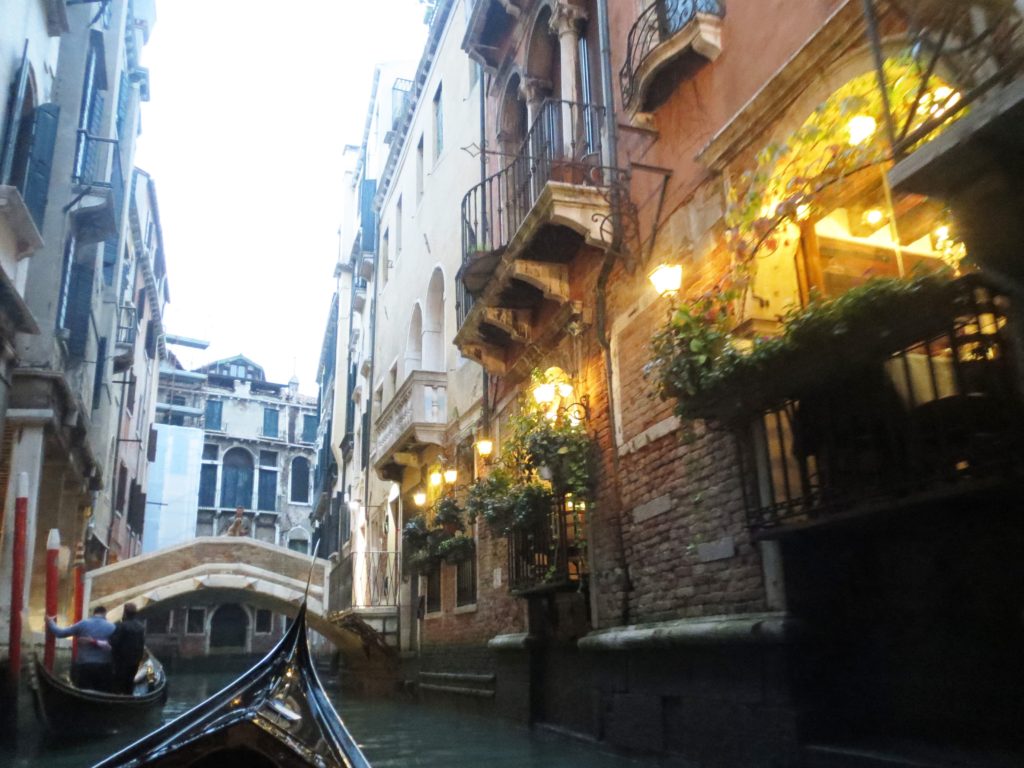Fast Facts:
- Country: Italy
- City: Venice
- Location: Situated in the northeastern part of Italy, Venice is the capital of the Veneto region.
- Language: Italian
- Currency: Euro
For this trip:
- Month of Travel: October
- Weather: 14 to 18 deg C
- What to Wear: Coming from sunny Dubai, visiting Venice in autumn felt like winter to us. Just when we thought we were sufficiently padded up, a cold wind would blow and we’d regret not bringing that extra scarf. It wasn’t unbearable, but definitely wear enough layers to keep you warm and comfortable.
Does Venice ever have a low season? October is meant to be the beginning of it but when we arrived, it was a packed open-air museum of elegant decay. Despite this and the gloomy weather, Venice swiftly found its way to our hearts. It’s like a woman who grows wiser, more beautiful and more graceful as she ages, lines and scars on her skin. And as she draws you in, all you want to do is watch and listen as she tells her tales. One day is not enough to take it all in, but if this is all you have, here’s an itinerary that covers her milestones.
Rialto Bridge (Ponte de Rialto)
Located at the heart of Venice, Rialto Bridge is the oldest and for us the most charming of the bridges spanning the Grand Canal. Once upon a time, it used to be the only way to cross the Grand Canal on foot.
St. Mark’s Square (Piazza San Marco)
St. Mark’s Square is an eight-minute walk from the Rialto Bridge. It has always been the social and political center of Venice and is the only square that holds the title of “piazza”- the rest are called “campi” or fields.
St. Mark’s Basilica (Basilica di San Marco)
Located at the eastern end of St. Mark’s Square, St. Mark’s Basilica is the cathedral church of the Roman Catholic Archdiocese of Venice. Aside from being the most popular church in this city, it is an important religious landmark that houses the remains of St. Mark after Venetian merchants smuggled the relics from Egypt.
St. Mark’s Campanille (Campanile di San Marco)
St. Mark’s Bell Tower is part of St. Mark’s Basilica originally constructed as a lighthouse then a watchtower. The symmetrically square tower has five bells that had specific function from announcing council meetings to executions. Above the belfry are a gold-leaf pyramid-shaped spire and the statue of Angel Gabriel, which also used to be the first sight of Venice for those arriving from the seas. Galileo Galilei also climbed this tower to observe the stars.
Doge’s Palace (Palazzo Ducale)
From St. Mark’s Basilica, you can walk for three minutes and reach Doge’s Palace. It was the residence of the Doge of Venice (Duke of Venice), the chief magistrate and leader of this once sovereign state for over a millennium.
Bridge of Sighs (Ponte dei Sospiri)
The Bridge of Sighs connects the Doge’s Palace with the Old Prison so that convicts could easily be moved from the courtrooms where they were sentenced to their prison cell or execution. Legend has it that its name came from sighs of prisoners as they had their final glimpse of the free world from the bridge’s windows while some say it’s from sighs of lovers as they pass under the bridge, watching the Venetian sunset.
No matter how much you think you know Venice and her story, a visit wouldn’t be complete without a lullaby from its canals. The vaporetti are the main form of transportation in Venice while the traghetti are the same as gondolas, but with the purpose of moving passengers quickly from one side of the canal to the other.
If you want a more leisure cruise, riding a gondola is the perfect option to discover this floating city. It costs 80 Euros for 40 minutes and goes up to 100 Euros after 7:00pm. Our tip is to pick a time so that sunset happens around the midpoint of your ride. That way, you still have enough light to appreciate the narrow canals. Then finally, as the city calms after crowds have left with their cruise ships, as the sun goes down and the lanterns come on, witness as Venice reveals why she still reigns as Europe’s most romantic city.

